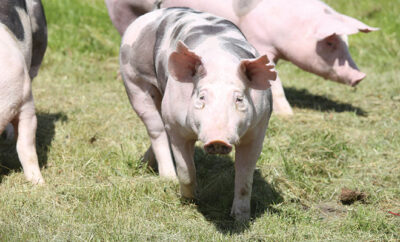
Where There’s Smoke…
I recently organized our spice rack, sorting through various jars and tins and tossing out the expired ones. This brought back memories of my family’s spice cabinet.
That kitchen cabinet had once stored an ironing board. It had been repurposed and had a dozen tiny shelves filled with all kinds of spices. Some, such as salt, pepper and cinnamon, were often used. Others, including allspice and cloves, were seasonal. But there was one item in that cabinet that I never saw my parents use.
This mystery ingredient was a small, dark bottle labeled “liquid smoke.” That seemed silly, because I knew exactly how food was smoked. We had a smoker in our back yard that my dad built from blocks of limestone. His overbuilt smoker reflected the fact that he had worked as a butcher; it was large enough to hold a dozen chickens, several whole turkeys or enough slabs of ribs to feed a crowd. This was a good 20 years before barbecue smokers became popular with home cooks.
Smoking food over indirect heat is indeed a labor of love. But it’s nothing new. Humans evolved by cooking food over smoky fires for hundreds of thousands of years. Smoking meat helps removes moisture, which prevents spoilage, and that helped our ancestors preserve food.
I know now that the smoker my dad built was ahead of its time. I think if he were alive today, he would be amazed by the variety of smokers on the market. Fueled by charcoal, gas, electricity or wood pellets, smokers are available from around $50 to over $5,000. Whether you tailgate or have an elaborate outdoor kitchen, you can find a smoker that fits your budget.
I’ve noticed that many brands of smokers appear to be made from metal drums that look like oil barrels. Why? Well, these offset smokers became popular in the 1980s. Coincidentally, that was a time when oil prices fell from $30 a barrel to $10 a barrel. One Texas sheet metal company that made metal oil drums saw their business fall off. The owners had been making barbecues from the barrels as a hobby and found that their product was more sturdy than other commercial grills. Looking for ways to keep the business running, they re-tooled and began manufacturing grills. These barrel smokers were different from traditional grills because the firebox was offset to the side of the grill. This meant that instead of grilling over high heat, food could be slowly cooked on low heat, flavoring it with smoke. Within a decade, competitive barbecue contests became popular, and smoking devices became popular as well.
Smoking benefits all kinds of food, not just barbecue or meat. If you look around your kitchen, you may see several products that are smoked. The most popular are smoked salt, chipotle peppers and Spanish smoked sweet paprika. But you can really smoke nearly any food—meats, fish, vegetables, fruit, nuts, even dairy. You’ve probably tasted smoked cheese. Think outside the box, and experiment by smoking hardboiled eggs, heavy cream or condiments such as ketchup and mustard.
You can even smoke liquids. For the ultimate smoky cocktail, fill a metal tray with distilled water and smoke it. The ice cubes made from this water are ideal for a Bloody Mary. Take beer, for example. Beer was traditionally made by first malting grains such as barley and wheat by steeping grain in water until it began to sprout. At that point, it was necessary to dry the grain out before it turned moldy. Drying the grain was done over a wood fire, on a metal mesh grill. As the sprouted grain dried, it was infused with smoke, which in turn infused the beer itself with a smoky flavor. As the Industrial Age brought improved technology, eventually wood fires were not required to make beer. However, the wood-fire tradition never died. Today there are hundreds of smoky-flavored beers available in the United States and Europe.
If you love the idea of smoked foods but don’t have access to a smoker, try cooking with wood chips on your charcoal grill. Soak the chips in water before tossing them on the coals. For gas grills, wrap the wet chips in heavy-duty foil, then poke holes in the foil to release the smoke.
You can also experiment with that mysterious bottle of liquid smoke; it’s essentially water vapor made from firewood. It’s purified, distilled and condensed to use in cooking. It’s intense, but used sparingly, liquid smoke can add a depth of umami-like flavor to various dishes and sauces.
Note that processed foods commonly use liquid smoke to enhance flavor–for example, barbecue sauce–or color. Product labels differentiate natural products as “natural wood smoke” or “liquid smoke,” while synthetic chemical ingredients are described as “artificial smoke flavoring.”
Sources: dartagnan.com, barbecuebible.com and atlasobscura.com.







